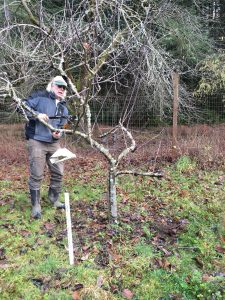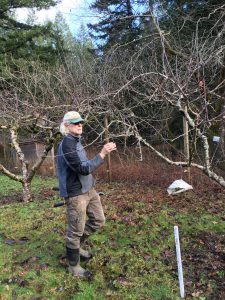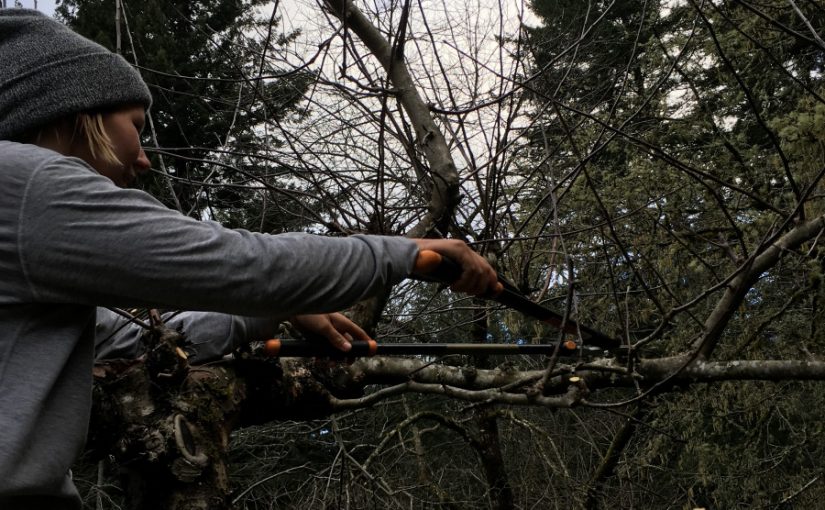Before making any cuts, it is important to look at the tree you are about to prune and assess what the desired outcome for pruning. Pruning inevitably will

Photo: Allie Kuppenbender
decrease yield for that season, but over time it will increase the quality of fruit and decrease susceptibility to disease and pest pressure. Make sure to think about where the sunlight will hit the tree in the various seasons before ever even making any cuts. This assessment is critical to successful pruning. Pruning can be done either in the winter or early spring, when the tree is dormant, or in the summer. Winter pruning is generally more intensive, whereas summer pruning is mainly to increase sunlight and airflow in the center of the tree. Also keep in mind that, especially if you have neglected the tree for a while, this will be a multi-year process to achieve the ideal shape. In a given year, you should take out roughly 10-30% of the given tree without shocking its root system.
First Cuts I would:

Photo: Allie Kuppenbender
- Take out suckers and water sprouts
- Take out any crossing branches (either within the same tree or overlap on neighboring trees), look for which branches have the best crotch angles (ideally 45-60 degrees) as the branches to keep
- Take out any diseased or dead wood
After these cuts, I would:
- Do my heading cuts, which would bring the tree down and in (forcing more branching and less outward/upward growth)
